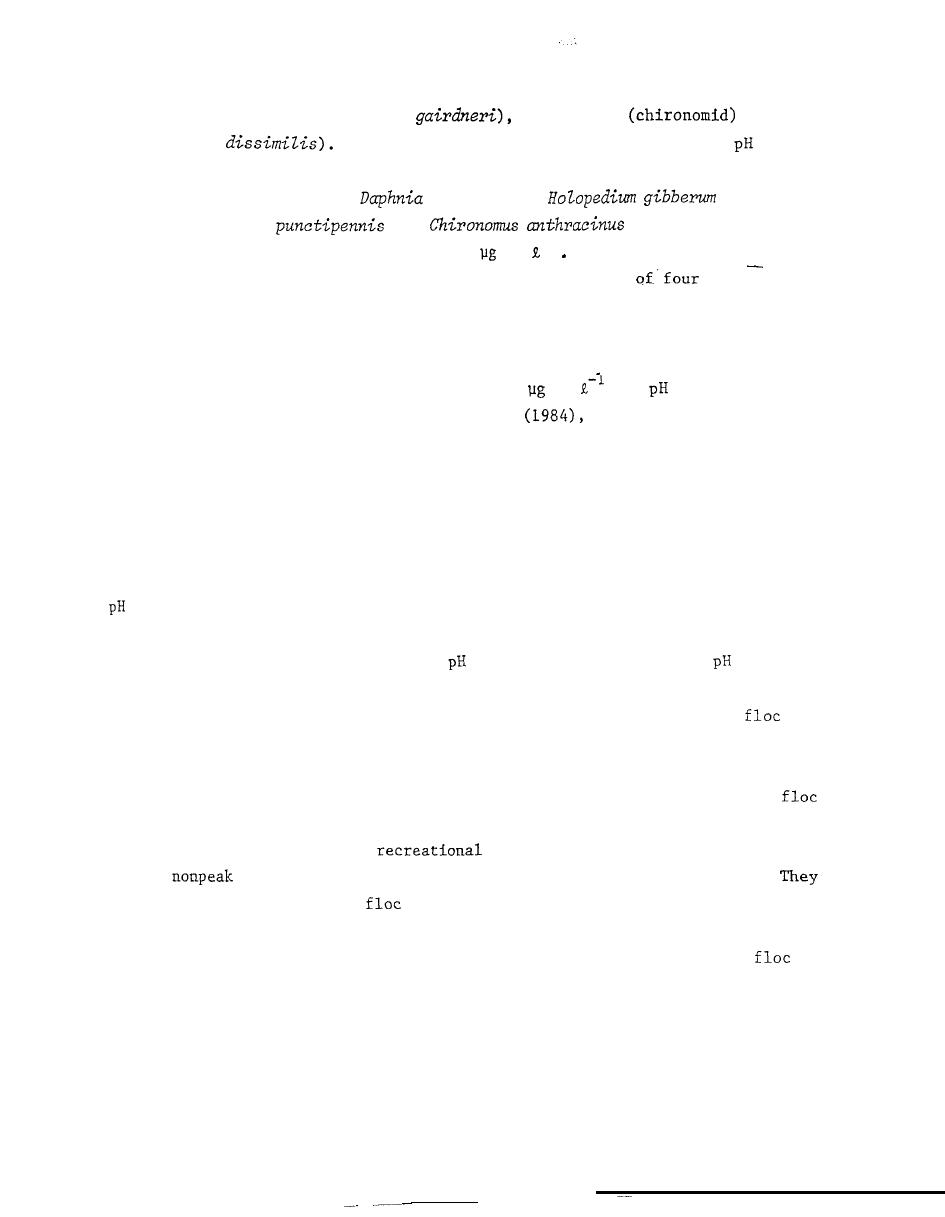
(zooplankton), rainbow trout (S.
and insect
larvae
(Tanytarsus
This concentration will not be reached if
6.0 or
more is maintained (Kennedy and Cooke 1982).
Havas and Likens (1985) have
catawba and
found that the zooplankton
and the
insects Chaoboms
were tolerant of
and
-1
aluminum concentrations higher than 300
Al
Narf (1978) reported that
there had been no damage to the invertebrate populations
Wisconsin
lakes during several years of monitoring after alum applications. A report by
Moffett (1979) suggests that species diversity of planktonic microcrustacea in
West Twin Lake, Ohio, was reduced for at least 3 years after an alum treatment
in which dissolved aluminum never exceeded 2
Al
and
and alkalinity
returned promptly to normal.
Gibbons et al.
however, found no lasting
impact to the zooplankton of Liberty Lake, Washington, after an alum appli-
cation, supporting the conclusion of Moffett that predation may have produced
the zooplankton shift.
Much more research, especially field studies, is needed concerning the
However, it appears, from the
toxicity Of aluminum to aquatic communities.
laboratory and limited field data, that few risks to biota can be expected if
6.0 or above is maintained.
It should be noted that soft-water lakes found
in regions that receive extensive acid precipitation could be a future hazard
6.0 in
after an aluminum treatment, if lake
falls significantly below
the years following aluminum treatment.
Bulson et al. (1984) have observed that the aluminum hydroxide
is
very efficient in the removal of fecal coliform and fecal streptococci bac-
..
teria during a lake treatment, suggesting that enteric species, including
pathogens, might also be accumulated.
Bacteria appear to die off in the
and are not released from it.
Bulson et al., however, suggest that there be a
posttreatment restriction on
use, or a restriction of treatment
to the
recreational season to allow a long die-off of bacteria.
also caution that intake of
into a potable water treatment plant could
pose a health hazard.
It is likely, in many cases, that the pretreatment
process with alum in potable water treatment plants should remove any
in
the raw water intake.
Aluminum sulfate and sodium aluminate applications will bring about
greatly increased water clarity.
This benefit of the method could produce a
57



 Previous Page
Previous Page
